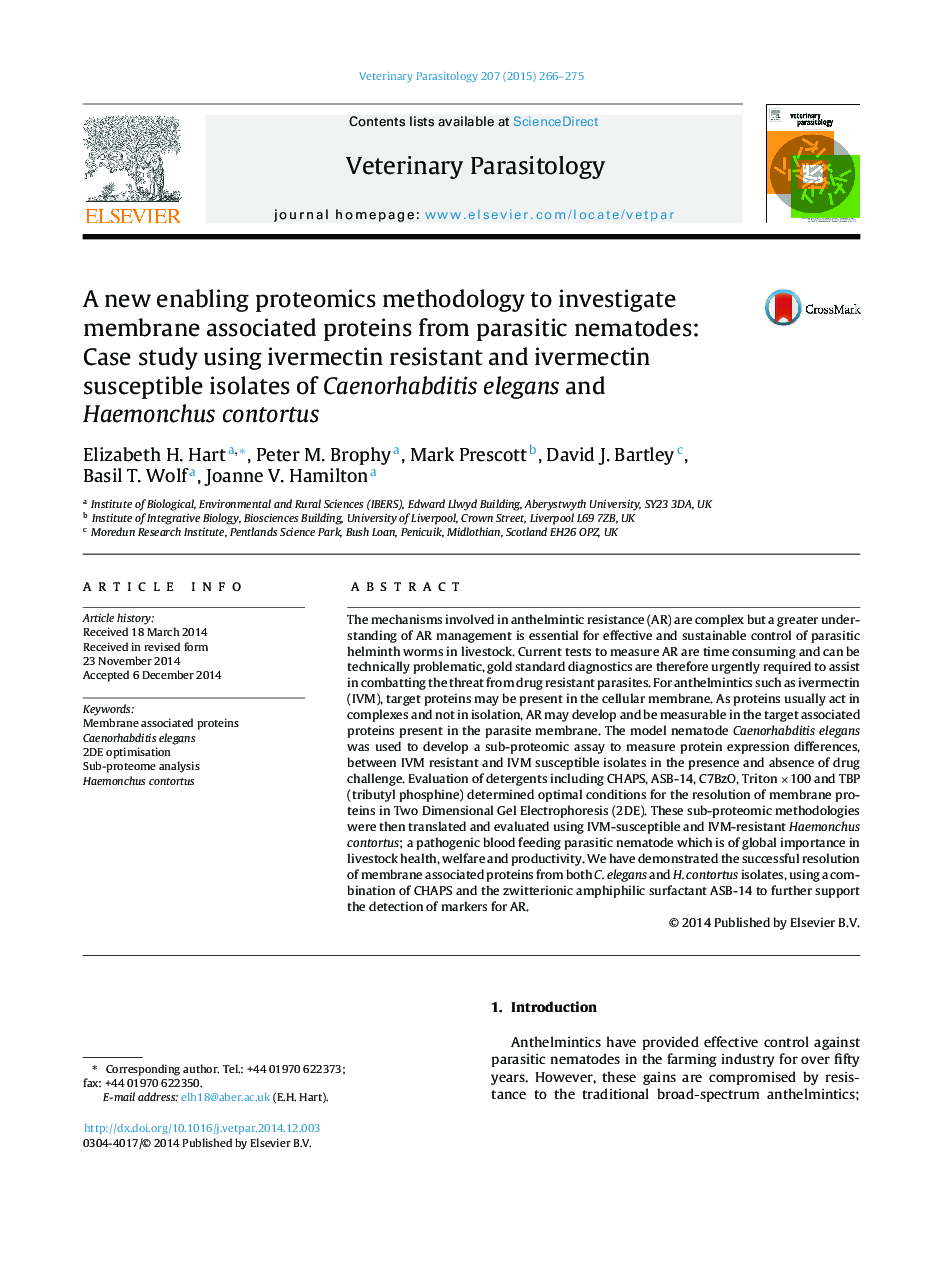| کد مقاله | کد نشریه | سال انتشار | مقاله انگلیسی | نسخه تمام متن |
|---|---|---|---|---|
| 5802598 | 1555676 | 2015 | 10 صفحه PDF | دانلود رایگان |

- New methodology for solubilising membrane associated proteins of C. elegans.
- Methodology is transferable to the veterinary parasite H. contortus.
- Combination of ASB-14 and CHAPS is optimum for 2DE resolution.
The mechanisms involved in anthelmintic resistance (AR) are complex but a greater understanding of AR management is essential for effective and sustainable control of parasitic helminth worms in livestock. Current tests to measure AR are time consuming and can be technically problematic, gold standard diagnostics are therefore urgently required to assist in combatting the threat from drug resistant parasites. For anthelmintics such as ivermectin (IVM), target proteins may be present in the cellular membrane. As proteins usually act in complexes and not in isolation, AR may develop and be measurable in the target associated proteins present in the parasite membrane. The model nematode Caenorhabditis elegans was used to develop a sub-proteomic assay to measure protein expression differences, between IVM resistant and IVM susceptible isolates in the presence and absence of drug challenge. Evaluation of detergents including CHAPS, ASB-14, C7BzO, Triton Ã100 and TBP (tributyl phosphine) determined optimal conditions for the resolution of membrane proteins in Two Dimensional Gel Electrophoresis (2DE). These sub-proteomic methodologies were then translated and evaluated using IVM-susceptible and IVM-resistant Haemonchus contortus; a pathogenic blood feeding parasitic nematode which is of global importance in livestock health, welfare and productivity. We have demonstrated the successful resolution of membrane associated proteins from both C. elegans and H. contortus isolates, using a combination of CHAPS and the zwitterionic amphiphilic surfactant ASB-14 to further support the detection of markers for AR.
Journal: Veterinary Parasitology - Volume 207, Issues 3â4, 30 January 2015, Pages 266-275